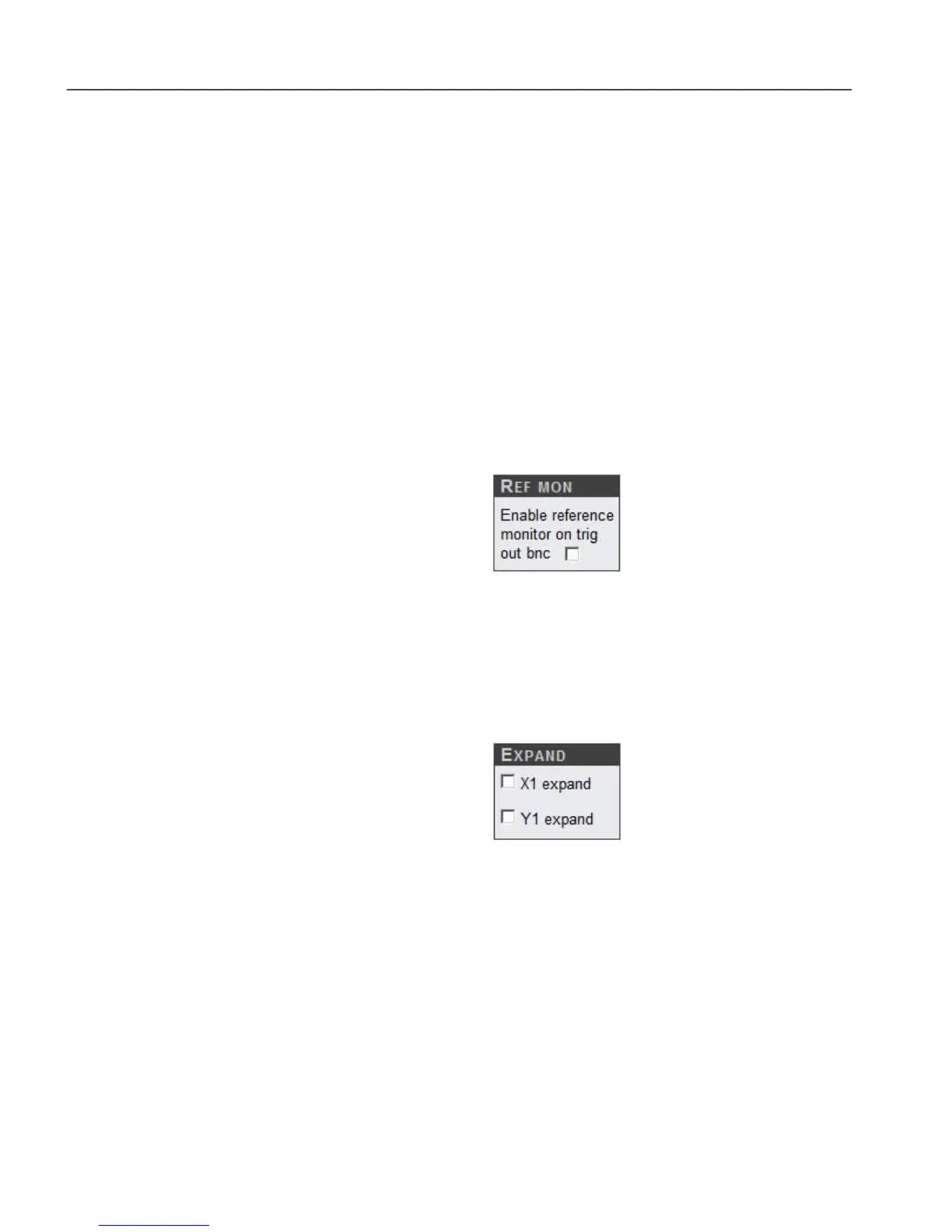Chapter 5, WEB CONTROL PANEL OPERATION
5-38
or odd parity.
Delimiter
The character selected is that sent by the lock-in amplifier to separate two numeric
values in a two-value response, such as that generated by the MP command.
Echo on
When this box is checked, the instrument echoes each character received over the
RS232 interface back to the controlling computer. The computer should wait until
the echoed character is returned before it sends the next character. When unchecked,,
character echo is suppressed.
Prompt on
When this box is checked, a prompt character is generated by the model 7230 after
each command response to indicate that the instrument is ready for a new command.
The prompt character is either a "*" or a "?" If a "?" is generated, it indicates that an
overload, reference unlock, parameter error or command error has occurred. When
unchecked, no prompt character is generated.
5.3.20 Rear Panel: Ref Mon
Figure 5-37, Ref Mon Control
When checked, this control, shown in figure 5-37, is used to configure the rear-panel
TRIG OUT connector as a TTL reference monitor output. In this setting the signal
at this connector is a TTL signal at the present reference frequency (either internal or
external) which can be used to monitor correct operation of the reference channel.
5.3.21 Rear Panel: Expand
Figure 5-38, Expand Control
These two controls, shown in figure 5-38, control the output expansion status of the
X1 and Y1 outputs when they are specified as analog signals at the DAC connectors.
X1 expand
When this box is checked and the DAC1 output is set to X% then the voltage present
at the output will be multiplied by 10. Hence if the X% output is 10% and X1 expand
is checked, the voltage at DAC1 will be 2.5 V rather than the 0.25 V that would
apply otherwise.
Y1 expand
When this box is checked and the DAC2 output is set to Y% then the voltage present
at the output will be multiplied by 10. Hence if the Y% output is 10% and Y1 expand
is checked, the voltage at DAC1 will be 2.5 V rather than the 0.25 V that would

